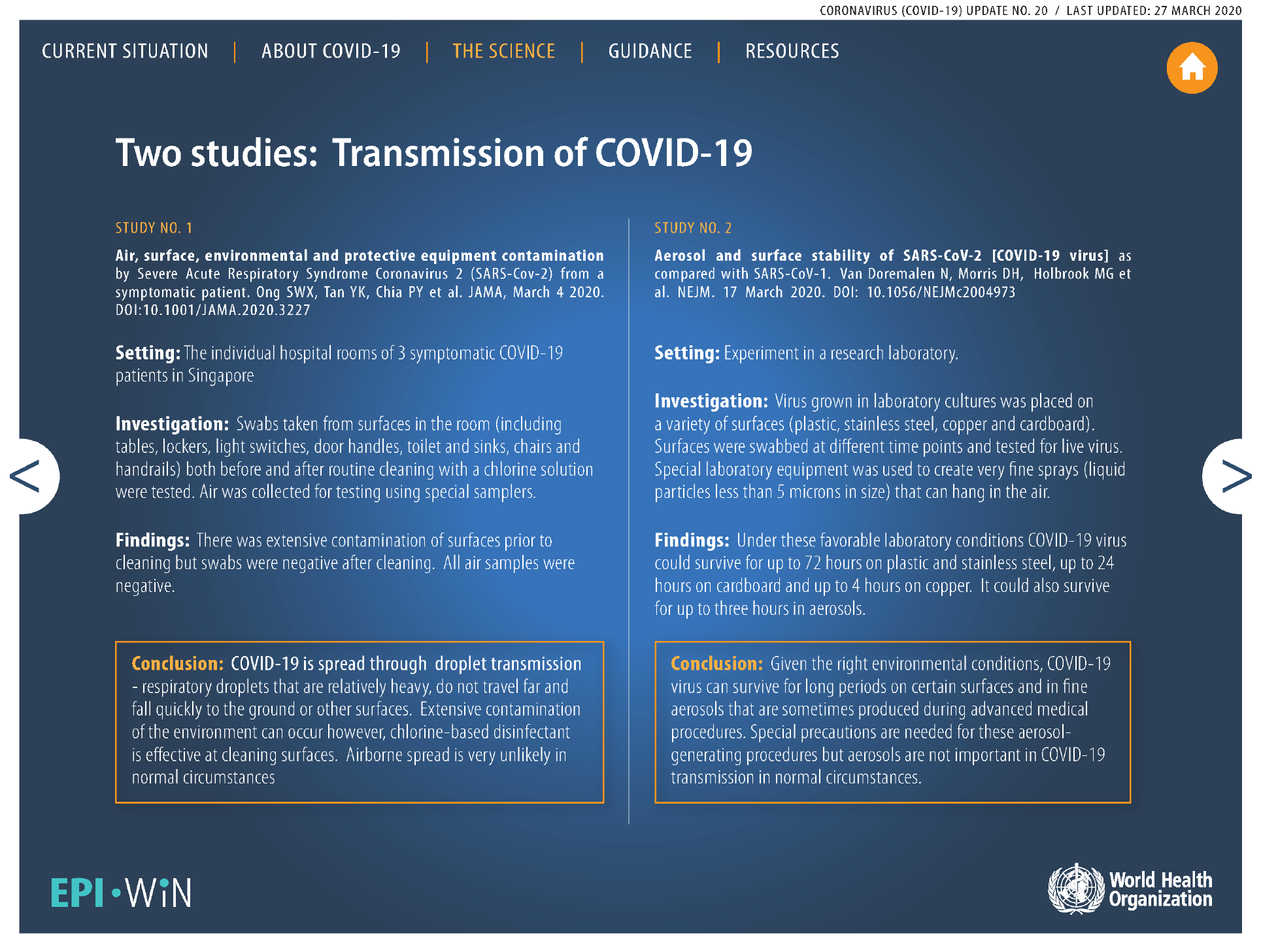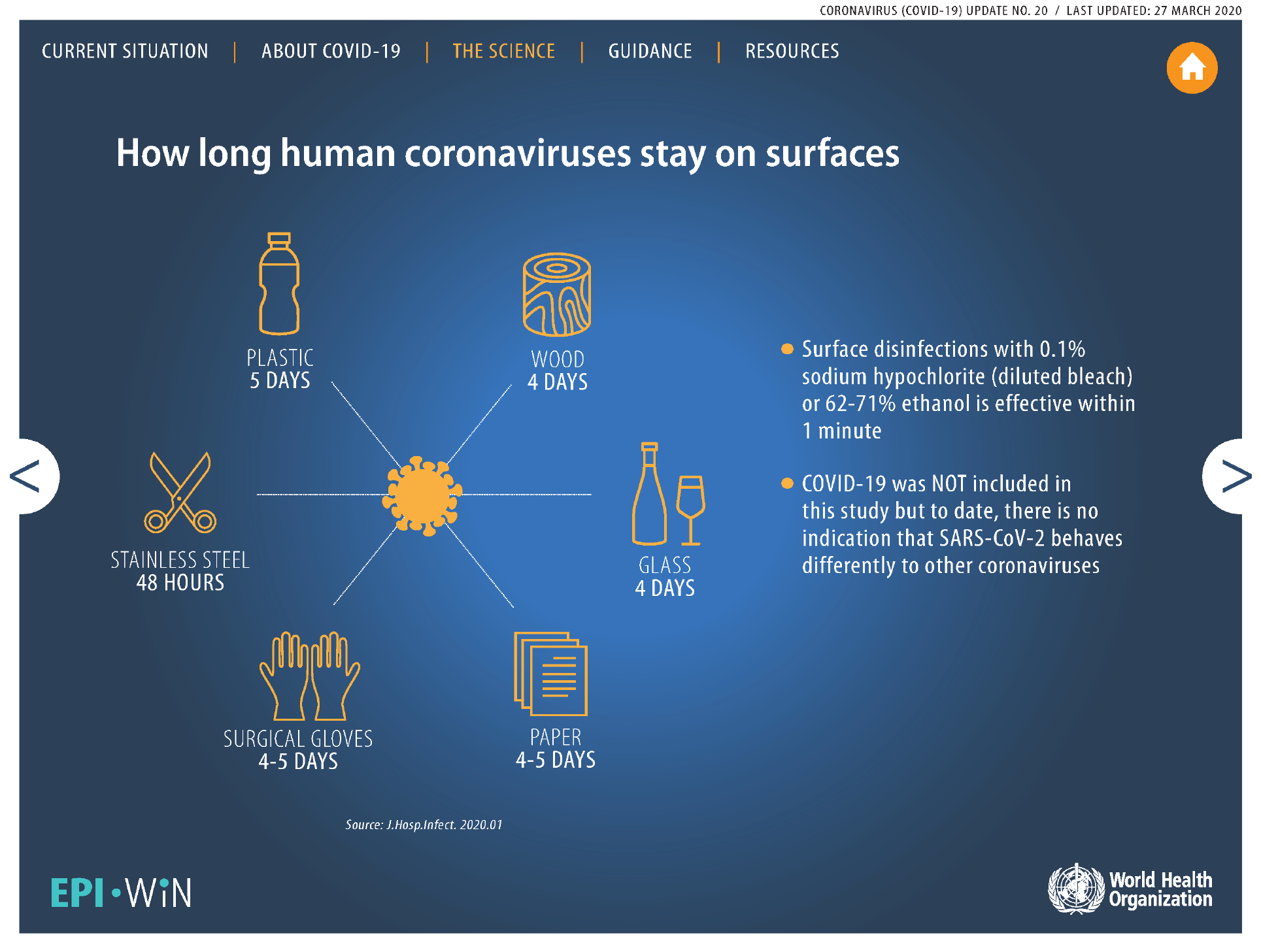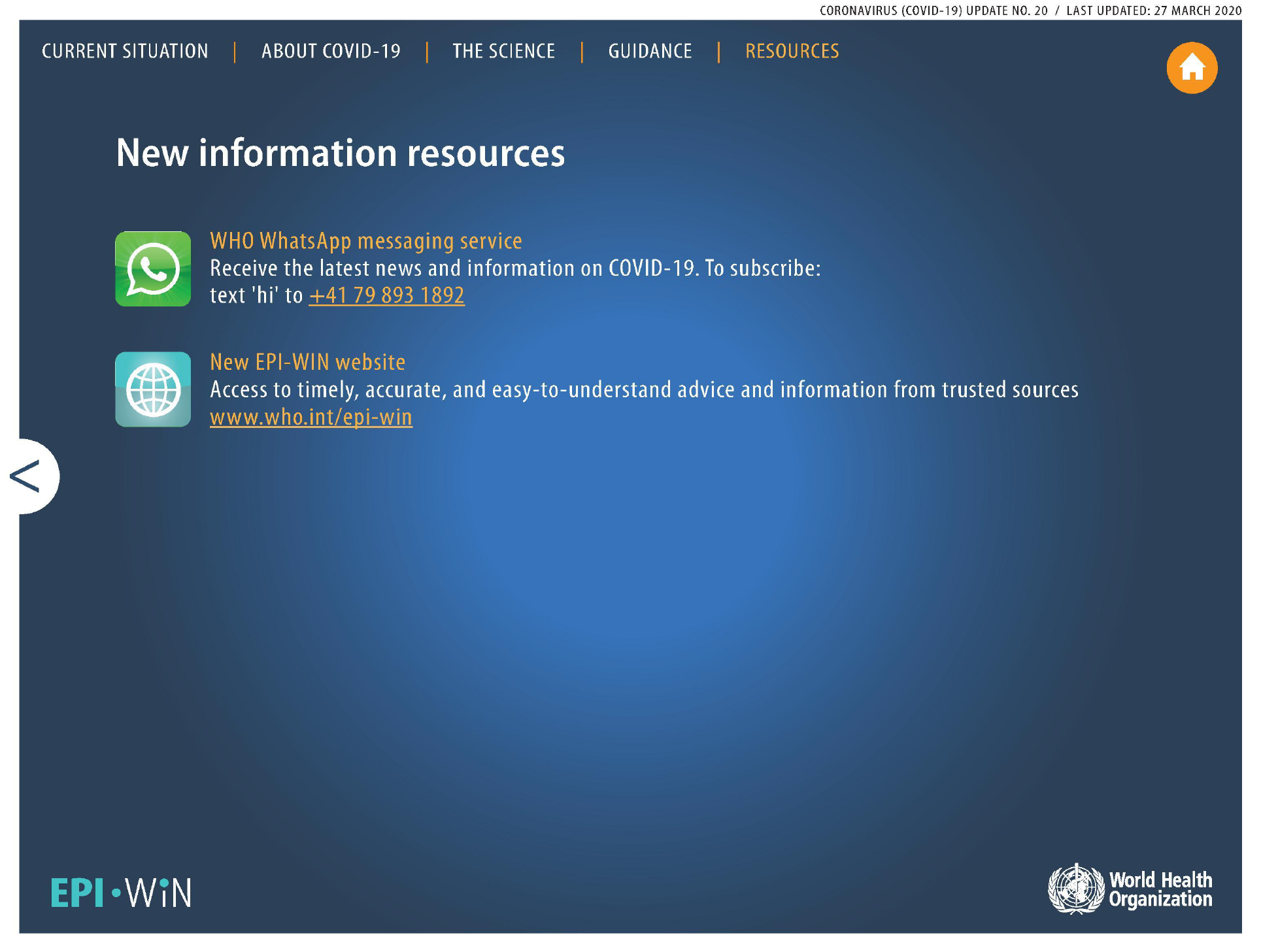
CURRENT SITUATION | ABOUTCOVID-19 | THESCIENCE | LUNG a
CORONAVIRUS (COVID-19) UPDATE NO. 20 / LAST UPDATED: 27 MARCH 2020
RESOURCES
Two studies: Transmission of COVID-19
STUDY NO. 1
Air, surface, environmental and protective equipment contamination
by Severe Acute Respiratory Syndrome Coronavirus 2 (SARS-Cov-2) from a
symptomatic patient. Ong SWX, Tan YK, Chia PY et al. JAMA, March 4 2020.
DOI:10.1001/JAMA.2020.3227
Setting: [he individual hospital rooms of3 symptomatic COVID-19
patients in Singapore
Investigation: Swabs taken from surfaces in the room (including
tables, lockers, light switches, door handles, toilet and sinks, chairs and
handrails) both before and after routine cleaning with a chlorine solution
were tested. Air was collected for testing using special samplers.
Findings: There was extensive contamination of surfaces prior to
cleaning but swabs were negative after cleaning. All air samples were
Maeren
Conclusion: COVID-19is spread through droplet transmission
- respiratory droplets that are relatively heavy, do not travel far and
fall quickly to the ground or other surfaces. Extensive contamination
of the environment can occur however, chlorine-based disinfectant
Reeth ome] elec] RSU [Ar[@cama OSI O(a[O MRR AUTON Ca) mI
normal circumstances
STUDY NO. 2
Aerosol and surface stability of SARS-CoV-2 [COVID-19 virus] as
compared with SARS-CoV-1. Van Doremalen N, Morris DH, Holbrook MG et
al. NEJM. 17 March 2020. DOI: 10.1056/NEJMc2004973
Setting: Experiment in a research laboratory.
Investigation: Virus grown in laboratory cultures was placed on
a variety of surfaces (plastic, stainless steel, copper and cardboard).
SIVAC (CoM em) ] 01010) mel inact] Me A ALom O1O)I Ne] ATOM CiexOm (Om Mon AT OS
Special laboratory equipment was used to create very fine sprays (liquid
particles less than 5 microns in size) that can hang in the air.
Findings: Under these favorable laboratory conditions COVID-19 virus
could survive for up to 72 hours on plastic and stainless steel, up to 24
hours on cardboard and up to 4 hours on copper. It could also survive
for up to three hours in aerosols.
Conclusion: Given the right environmental conditions, COVID-19
virus can survive for long periods on certain surfaces and in fine
aerosols that are sometimes produced during advanced medical
procedures. Special precautions are needed for these aerosol-
generating procedures but aerosols are not important in COVID-19
transmission in normal circumstances.
EP|-WiN
cy TOE eet a
Organization




















